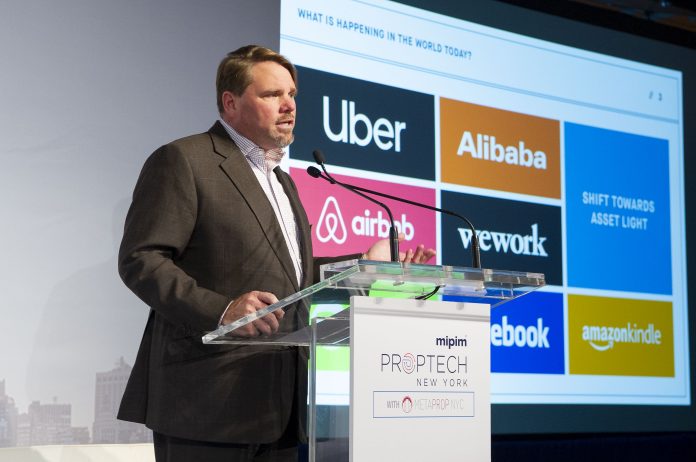The resounding message from Michael Philips, president of Jamestown and a keynote speaker at MIPIM?s PropTech NYC conference is to create technology-enabled, frictionless workplaces that attract and retain top talent for commercial real estate tenants.
?The race for talent has become everyone?s obsession. We find it?s our job as real estate company to become the best partner we can in helping our tenants to attract and retain the best talent and workforce,? said Phillips, who leads the real?estate?private equity firm specializing in investments.
?We, as real estate investors, have to sit up and pay attention to the disintermediation in the space. The world?s most successful auto company owns no cars,? said Phillips alluding to unicorn Uber. The same paradigm applies to WeWork’s property business.?
If there is anyone who understands the relationship between culture, technology and real estate it’s Philips, who is known for revitalizing outdated buildings into profitable and thriving innovation hubs by creating technology-enabled tenant ecosystems.
Among its most recent projects was a $2.4 billion sale of the Chelsea Market building to Google, the largest commercial property trade in New York City to date. ?

Industry City, Ponce City Market and the Innovation and Design Building located in Boston, which houses Reebok?s new headquarters, are all examples of how Phillip?s vision transformed dated locations into purposeful connected ecosystems built for the millennial employee.
The core concept is bringing together tenants that span the entire manufacturing process from digital design to production, engineering, testing and distribution into a like-minded, collaborative tenant community enabled by technology.
The idea was powerful enough to convince Reebok to relocate 750 employees to a 220,000-square-foot urban site in the Innovation and Design Building?joining tenants like Autodesk BUILD Space and Continuum.
Jamestown understood the company?s fitness-driven culture outfitting the location with a state-of-the-art gym equipped with a boxing ring, a CrossFit box and a range of classes that cater to all workout preferences and levels and 300 bikes outside for commuting.
These and other features enabled the company to energize its brand, modernize culture and draw top talent, said Phillips.
Today the company?s workforce has reduced its driving to 20% from 80% and has a phenomenally low attrition rate of 2.2% ?and 85% employee satisfaction.
?We don?t measure success solely in rental rates or the length of lease terms. Our role is to partner with tenants to create the best environment to attract and retain their workforce,? he said
A key to creating desirable work and guest spaces is eliminating friction and that means finding alternatives to visible security and turnstiles at entry and exits which are often pain points for guests and workers. ?
Enabling workers and guests to feel a seamless interaction with the buildings they occupy promotes a better work environment, said Phillips.
?Chelsea Market has no?visible security or turnstiles. It’s been that way for 20 years,? he added.
Owners and investors should be willing to test ideas through limited rollouts and create dialogue around design development, Phillips said.
While the buildings of the future and how we interact with them will undoubtedly be re-shaped by technologies such as 5G and autonomous cars, in the near term?it’s about seizing opportunities that enable companies to remain flexible and engage in technology.?
?Winners in the downturn will be flexible companies that provide engagement in technology to the workforce,? Phillips said.

